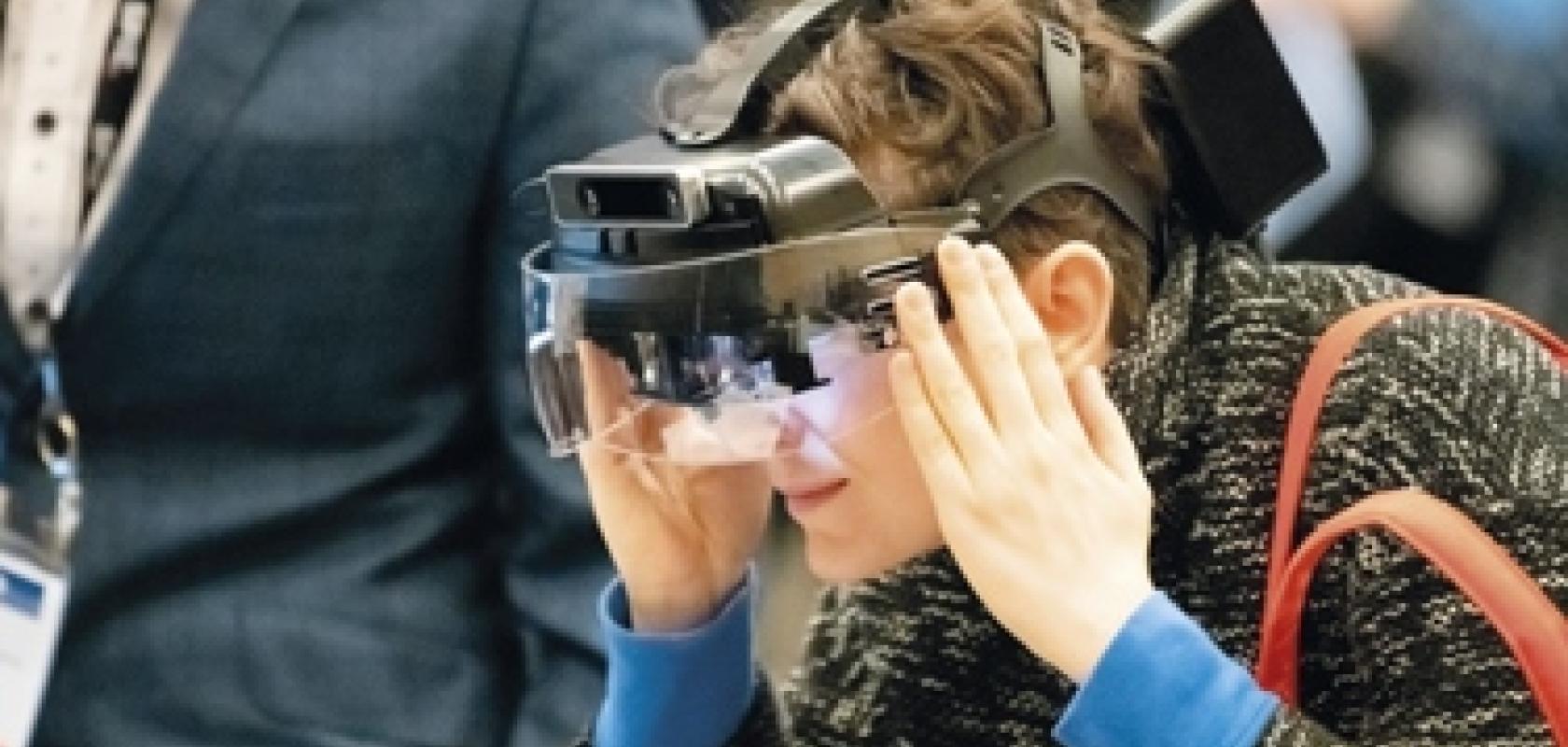MicroLEDs are the ‘hot, new vital building blocks’ for augmented and mixed reality, attendees of SPIE’s AR VR MR conference heard in February.
The conference, held alongside Photonics West in San Francisco, offers attendees a chance to see the latest developments in extended reality (augmented, virtual and mixed reality), through presentations and product demonstrations delivered by leading academic and commercial entities.
In virtual reality devices, a user’s field of view is completely obscured by a screen displaying a virtual world, whereas in augmented or mixed reality, users instead see the real world partially overlaid with virtual elements, such as text or images.
In addition to the gaming world, AR and MR are set to benefit a number of real-world scenarios, for example by guiding surgeons in medicine, helping educate children in the classroom, or providing assistance in sport or navigation.
To enable the applications, high-resolution images that can be seen outdoors in bright light must be produced over a wide field of view, in front of the human eye. This requires compact displays of high pixel density and brightness, which is where microLEDs come in.
Similar to the organic LED (OLED) pixels used in many smartphone displays and televisions, microLED pixels are self-emissive, meaning they can be turned on or off independently to provide a crisp contrast. Unlike OLEDs however, microLEDs are made using inorganic materials, meaning the displays are not prone to the same issues of degradation and burn-in traditionally associated with OLED displays, caused by their organic material breaking down over time.
Related stories:
New approaches to components improve augmented reality
Can holograms replace smartphones?
Brian Schowengerdt, co-founder and chief science and experience officer at Magic Leap, told the conference: ‘Many of us in the industry are highly interested in inorganic LED arrays on the micro scale, for the potential they offer to revolutionise the industry. Some of these reasons include high brightness while maintaining low power consumption, high refresh rate in a compact form factor, and the potential for very small pixel pitch.’
Founded in 2010, Magic Leap has raised $2.6bn in funding from investors, including Google and AT&T, to develop compact mixed reality headsets.
Not only are microLEDs brighter and more power-efficient than OLEDs, but they are also, as their name suggests, tiny. These displays require millions of LEDs, as each pixel is formed of three individual red, green and blue (RGB) LEDs. This makes them ideal for delivering the small, bright, high-resolution displays required for AR and MR.
‘Pixel pitch is a key criterion for AR and MR system developers,’ said Schowengerdt. ‘There is a desire for strict form factor, while growing the total number of pixels to provide higher resolution over a large field of few.’
Schowengerdt was joined on the panel by Saket Chadda, CEO of microLED manufacturer Glo, who explained that the industry is moving towards 4µm pixel pitch, with all three RGB LEDs having to fit in this footprint. ‘This means each individual LED has to be smaller than 1µm,’ he said. At such reduced pixel pitch, not only does transferring millions of microLEDs in an RGB format onto a backplane become increasingly challenging, but so does the ability to maintain the high efficiency of the microLEDs. Addressing these issues is where, he said, the main technological obstacles lie in developing the displays.
Such challenges regarding microLED transfer have been well-known for some time – it is one of the key barriers facing the technology’s widespread commercialisation. Manufacturing microLED displays involves picking up large numbers of LED chips from epitaxial wafers, then placing them on a target substrate. Despite this being possible with rapid pick-and-place robots, it would still take around six weeks to transfer the 24 million microLEDs required to manufacture a large 4k display.
In addition to the challenges of microLED transfer, fellow panellist Eric Virey, senior analyst at French market research firm Yole Développement, added that when increasing the pixel density of a microLED display, light management also becomes a challenge – coupling light into the waveguides of an AR display. ‘Typically, the acceptance angle of these waveguides are +/-10°, which means ideally you want to have all the light emitted within these angles,’ he said.
‘However, microLEDs naturally tend to be Lambertian emitters, meaning they emit at 180°. You therefore need to have some form of light management to address this – but this does take up space.’
It is because of this, Virey remarked, that while he is already starting to see demonstrations of microLED with 10,000ppi pixel densities, getting significantly over 10,000ppi will be a challenge.
Schowengerdt, who moderated the panel, said there isn’t yet a clear consensus on which implementation of microLEDs is going to be best-suited for extended reality, or even when these solutions are going to be ready for market.
He asked the panel when they expect the first microLED-based extended reality solutions to be available. Their answers generally varied between one and four years.
However, Robert Visser, of materials engineering firm Applied Materials, disagreed, stating that a good rule of thumb is that new display technologies can be expected to hit the market around four to five years after a really good demonstration of them is seen at conferences such as CES – which he says he has not yet seen.
Virey added that microLED displays in other formats, such as for smartwatches, can be expected sooner, most likely by 2022.
The panellists did agree that when microLED-based extended reality technologies do finally hit the market, they will likely be at a high price point.
However, as with any technology, they will reach a more acceptable price for the consumer as their components are mass-produced.


